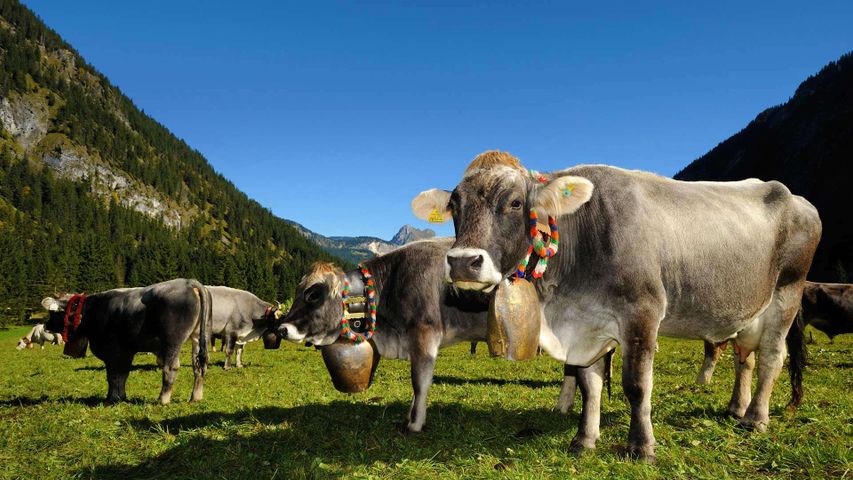A mountain gorilla eating in a tree in the Bwindi Impenetrable National Park, Uganda
© Robert Haasmann/Minden Picture
With leaves this tasty, who cares about a view?. With leaves this tasty, who cares about a view?
In the canopy of Uganda's Bwindi Impenetrable National Park, a mountain gorilla leans into a meal of succulent green leaves. By day's end, she'll likely eat close to 40 pounds of foliage. Locals call this forest Bwindi, which means 'impenetrable,' but to this mountain gorilla, it's simply home. Like us (and most primates), these gentle giants have opposable thumbs, which makes picking and eating an easy task. Also like us, mountain gorillas prefer hanging out on the ground. In fact, they're known to stand upright and walk short distances with a remarkably human-like gait. We humans share 98 percent of our DNA with gorillas (both the eastern and western species), nearly as much as we share with chimps and bonobos. So yes, even though they have more body hair, we're all hominids.On World Gorilla Day, observed September 24, we celebrate these great apes and support the ongoing work to protect them. While all gorilla species are endangered, only about 1,000 mountain gorillas are still living in the wild, making them critically endangered. It's largely thanks to the pioneering work and selfless dedication of primatologist Dian Fossey that many of us are aware of their plight. Today, gorillas remain plagued by the same threats Fossey witnessed more than four decades ago: poaching, disease, destruction of habitat, and human conflict. But census reports are reassuring; there are signs that the mountain gorilla population is increasing, but conservation efforts are critical to the species' survival.
Related Images
Bing Today Images



 Little Pigeon River, Great Smoky Mountains National Park, Tennessee
Little Pigeon River, Great Smoky Mountains National Park, Tennessee
 Paro Taktsang, a Buddhist monastery in Bhutan
Paro Taktsang, a Buddhist monastery in Bhutan
 Loisach River at Lake Kochelsee, Bavaria, Germany
Loisach River at Lake Kochelsee, Bavaria, Germany
 Kilchurn Castle reflected in Loch Awe, Argyll and Bute, Scotland
Kilchurn Castle reflected in Loch Awe, Argyll and Bute, Scotland
 Olive grove, Valle d'Itria, Puglia, Italy
Olive grove, Valle d'Itria, Puglia, Italy
 Red deer stag in the Caledonian Forest, Glen Affric, Scottish Highlands
Red deer stag in the Caledonian Forest, Glen Affric, Scottish Highlands
 Vancouver Coastal Sea wolves in Great Bear Rainforest, British Columbia, Canada
Vancouver Coastal Sea wolves in Great Bear Rainforest, British Columbia, Canada
 Madame Sherri Forest and the ruins of an old castle, New Hampshire
Madame Sherri Forest and the ruins of an old castle, New Hampshire


